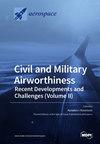A Study for a Radio Telescope in Indonesia: Parabolic Design, Simulation of a Horn Antenna, and Radio Frequency Survey in Frequency of 0.045–18 GHz
IF 2.2
3区 工程技术
Q2 ENGINEERING, AEROSPACE
引用次数: 0
Abstract
After years of preparation, the Indonesia National Observatory, located in Mount Timau, Kupang Regency, is currently in the completion stage of research in astronomy and astrophysics and related subjects. An optic telescope with a 3.8 m diameter is expected to receive its first light in mid-2024. A feasibility study for Indonesia’s radio telescopes and networks is in progress. A single-dish parabolic radio antenna with a diameter of 20 m is proposed to work in a frequency range of 1–50 GHz. An array dipole antenna with an area of 100 m × 100 m will also be installed at a 70–350 MHz frequency. A feasibility study about system design is in progress, and a radio frequency interference (RFI) survey has been underway since 2014. In this paper, we described the design of radio telescopes such as parabolic reflectors, horn antenna, and the radio frequency interference (RFI) in the surrounding area of the National Observatory, covering the frequency band from 45 MHz to 18 GHz. The frequencies in 45–85 MHz and 120–360 MHz intervals are still relatively quiet and suitable for developing radio telescopes. The selected higher frequency of 1.4 GHz for a neutral hydrogen (HI) spectral line, 6.6 GHz for a methanol (CH3OH) spectral line, and 8.6 GHz for a helium (3 He+) spectral line is still relatively quiet and suitable for the development of radio telescopes.印度尼西亚射电望远镜研究:抛物面设计、喇叭天线模拟和 0.045-18 千兆赫频率的射电频率测量
经过多年的筹备,位于古邦省提莫山的印度尼西亚国家天文台目前已进入天文学和天体物理学及相关学科研究的收尾阶段。一台直径为 3.8 米的光学望远镜预计将于 2024 年年中发出第一束光。印度尼西亚射电望远镜和网络的可行性研究正在进行中。拟建一个直径为 20 米的单碟抛物面射电天线,工作频率范围为 1-50 千兆赫。还将安装一个面积为 100 米×100 米的阵列偶极子天线,频率为 70-350 兆赫。有关系统设计的可行性研究正在进行中,射频干扰(RFI)调查自 2014 年以来一直在进行中。本文介绍了抛物面反射镜、喇叭天线等射电望远镜的设计,以及国家天文台周边地区的射频干扰(RFI)情况,覆盖的频段为 45 MHz 至 18 GHz。45-85 兆赫和 120-360 兆赫之间的频率仍相对安静,适合发展射电望远镜。所选的较高频率 1.4 千兆赫为中性氢(HI)谱线,6.6 千兆赫为甲醇(CH3OH)谱线,8.6 千兆赫为氦(3 He+)谱线,这些频率仍相对安静,适合发展射电望远镜。
本文章由计算机程序翻译,如有差异,请以英文原文为准。
求助全文
约1分钟内获得全文
求助全文
来源期刊

Aerospace
ENGINEERING, AEROSPACE-
CiteScore
3.40
自引率
23.10%
发文量
661
审稿时长
6 weeks
期刊介绍:
Aerospace is a multidisciplinary science inviting submissions on, but not limited to, the following subject areas: aerodynamics computational fluid dynamics fluid-structure interaction flight mechanics plasmas research instrumentation test facilities environment material science structural analysis thermophysics and heat transfer thermal-structure interaction aeroacoustics optics electromagnetism and radar propulsion power generation and conversion fuels and propellants combustion multidisciplinary design optimization software engineering data analysis signal and image processing artificial intelligence aerospace vehicles'' operation, control and maintenance risk and reliability human factors human-automation interaction airline operations and management air traffic management airport design meteorology space exploration multi-physics interaction.
 求助内容:
求助内容: 应助结果提醒方式:
应助结果提醒方式:


